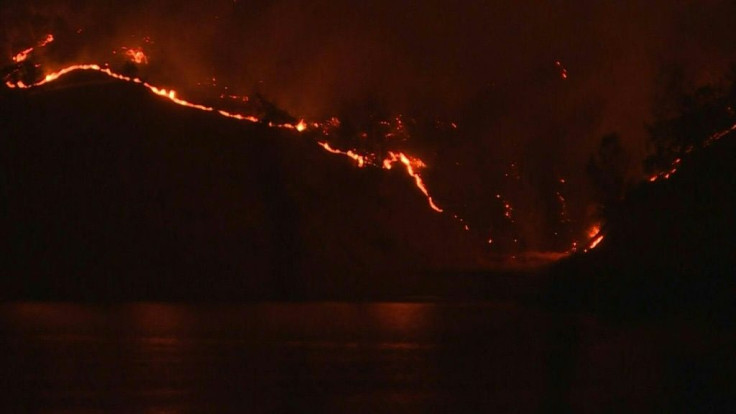Crews Make Headway Against California Wildfires, But Warmer Weather Could Slow Progress
KEY POINTS
- Crews and cooler weather helped contain over 60% of the two biggest wildfires in northern California
- At least six people have been killed and over 1,900 structures have been damaged or destroyed since the fires began
- The National Weather Service warned warmer, drier weather forecast for the week could impede progress made against the fires
California fire crews were able to make significant headway in their fight against the widespread wildfires still plaguing the northern areas of the state as of Monday, but that could change soon, officials warned.
The California Department of Forestry and Fire Protection said a week of cooler weather, along with new crews arriving to aid those battling the fires, helped make headway against the fires over the weekend.
As of Monday, crews had contained 60% of the SCU Lightning Complex fire. The SCU fire remains the largest of the three biggest wildfires with over 383,000 acres burned. It is also the least destructive of the three fires as only 58 structures have been damaged or destroyed and five people have been injured.
The LNU Lightning Complex fire has burned through 375,000 acres after crews contained 63% of the wildfire. The fire has damaged or destroyed 1,402 structures, killed five people, and injured another four.
Crews have made the least progress against the CZU Lightning Complex fire as they have contained 39% of the blaze. Nearly 1,500 structures have been damaged or destroyed, at least one person has been killed, and one was injured.
“We definitely have increased containment on all of the major fires, evacuations are being lifted and weather conditions are more favorable” Cal Fire spokeswoman Christine McMorrow told reporters during a Sunday call. “We are definitely making progress.”
The cooler weather was largely credited to a marine layer blanketing a large part of northern California in the wake of the dry storms and heatwave that caused the fires to intensify. The cooler temperatures and high humidity both helped slow down the wildfires.
However, officials said returning heat could end up slowing the progress made against the two biggest fires in the state.
“The bit of good news is the system might reduce inland winds. That might be a plus when it comes to fighting fires — less wind,” National Weather Service meteorologist Brayden Murdock told the Associated Press. “But conditions will be much drier, so that’s the trade-off.”
A fire weather watch has already been issued for areas of northern California’s in the fires’ projected paths. No dry storms are expected in the area, but the heat and dryness forecast for the week are expected to be enough to help the fires.
“Fuel conditions are near or exceeding critical thresholds over much of our area,” the NWS said in a press release.

© Copyright IBTimes 2024. All rights reserved.





















